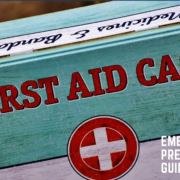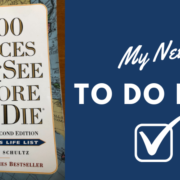Emergency Preparedness
Hi, it’s Heather from Skate Helper. I hope you and your families are safe and well. This week’s blog is about emergency preparedness. Every year people go through some kind of natural disaster and are forever changed. This pandemic has made me realize that I will never take my freedom for granted again. After weeks of isolation so far, it’s been fine. My family is adjusting to home schooling and working from home. The pandemic is certainly not a disaster in the sense that we still have electricity, we have our home, we have the internet and we have time lots of time.
Emergency Preparedness List
Many of us are spending that time going through old files and papers. Clearing the clutter from our homes. My friend Terry found an Emergency Preparedness list that I had sent her in 2006. I got the list from the City of Delta in BC where they had posted their emergency preparedness list broken down into 26 weeks. This is a handy list and have put it down below. We are living in a time where fire and floods happen regularly and many of us need to be prepared for extreme events like earthquakes, hurricanes or tornados. Preparing your family for an emergency is an excellent teaching exercise for everyone.
Action to Take
Week
- Get a portable container with a lid to use as an emergency kit. A plastic storage bin or garbage can work well, particularly one with wheels. Choose an accessible location for the container near an exit, and label the container. Make sure all family members know what it will be used for and where it is.
- Stock your kit with a three-day supply of water and include extra water if you have pets. Each person needs four litres of water a day – two for drinking and two for food preparation and hygiene (wash hands regularly).
- Arrange an out-of-area phone contact person, and keep this information and other emergency phone numbers written down carried in a wallet or with your cell phone. Make sure all family members have these numbers. Have phone charge battery and cords.
- Stock your kit with several varieties of canned meat and dried fruit. Include a manual can opener and scissors. Add, granola bars and nuts, juice crystals and juice boxes. Refresh food every 6 – 8 months.
- Get a portable radio and extra batteries. You can consider a portable generator.
- Learn about hazards in your house and your community. Secure appliances and heavy furniture and shelves. Move beds away from heavy mirrors and windows.
- Give every family member a specific safety task to do in an emergency. For example, one person should be in charge of turning off the electricity. One person to collect the emergency container. One person to take charge of the pets.
- Stock your kit with large garbage bags. They can be used as ponchos, ground covers or blankets. Get a few solar blankets. Add plastic bags, dishes, cups, and cutlery.
- Add books and toys if you have young children. Get a survival book. Add dried soup, crackers and peanut butter.
- Practice emergency drills. If you are not at home pick a community meeting place where you will head to if you are not at home. Identify, escape routes from your home.
- Add flashlights, with extra batteries, candles and waterproof matches.
- Check your insurance policies and take pictures of your possessions and your identification.
- Have cash in your emergency container. If the electrical grid is down you won’t be able to use debit or credit cards.
- Prepare a first aid kit for your container and also one for your car. Include prescription medicines, extra eye glasses, bandages, sterile gauze pads, tape, scissors, tweezers, antibiotic ointment, hydrogen peroxide and over the counter pain meds.
- Add a change of clothing for each family member. Include warm clothing, heavy work gloves, and sturdy shoes.
- Add additional can food like chili, stew, baked beans and fruit.
- Enrol each family member in a first aid course
- Add personal toiletry items like toilet paper, handy wipes, hand sanitizer, rubber gloves, soup, toothpaste, toothbrush, sanitary supplies etc.
- Add evaporated canned or powdered milk and cereal.
- If you have an infant include supplies like formula and diapers
- Have a bucket with a tight-fitting lid that can be used as a toilet. Use this bucket to store an axe, folding shovel, and rope.
- Make sure you have a pocket knife or swiss army knife that has a number of tools.Include a whistle, flares, spare set of house and car keys.
- Keep a leash and pet food close to the emergency container.
- Add sleeping bags and blankets to your kit.
- Water purification tablets and a water purification water bottle is handy.
- Assemble important documents like wills, insurance, medical records, passports, in a fireproof/waterproof container. It might be nice to have a family photo album in your emergency container. Refresh and revise your emergency container every year.
Fingers crossed that you will never need to use it. Emergency preparedness is never a waste of time. Always wash your hands frequently throughout the day.
Stay safe and healthy,
From Heather at Skate Helper.



